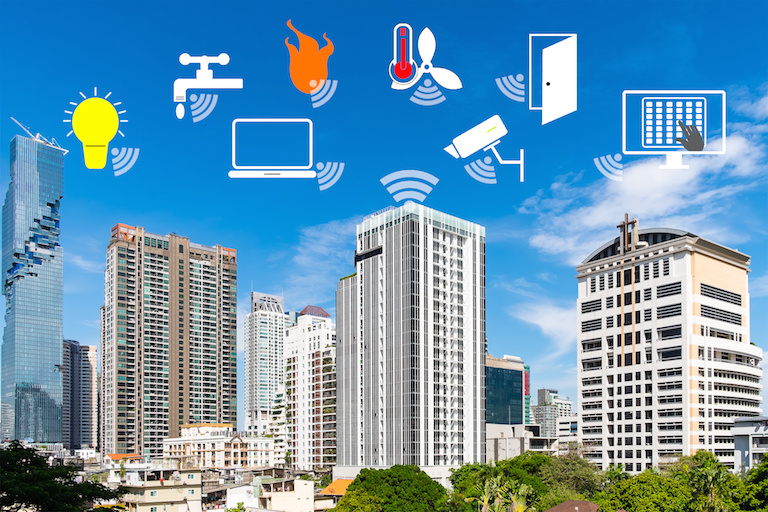Building Management and the Internet of Things

Building management or building automation systems (BAS) centralize control of a building’s HVAC. The Internet of Things (IoT) plays a major role in BAS because by definition it consists of devices that are interconnected through sensors and communication technology.
From an HVAC standpoint, the IoT enables BAS to unify a building’s systems so that they can be easily coordinated, monitored, and maintained as needed. Because of this, the IoT has revolutionized HVAC in commercial and industrial settings.
The Growth and Benefits of IoT-enabled BAS
The BAS market expanded from a value of $20 billion 2013 to nearly $54 billion in 2016 and an expectation to grow to more than $99 billion by 2022. This growth trend will likely continue as the market for IoT-enabled smart HVAC technology grows in commercial, industrial, and residential settings. Some of the benefits of IoT-enabled BAS include:
Money savings and enhanced building lifecycle through preventative maintenance – Smart HVAC systems can automatically monitor a building’s systems to let facility managers know in the event of a breakdown or malfunction. This saves money by preventing costs that can result from deferred maintenance which can be 30 times greater than if the problems were corrected immediately.
Smart HVAC can also support a building’s ongoing commissioning or building envelope commissioning processes. This is especially beneficial because nearly 35 percent of buildings in the U.S. have no regularly recurring HVAC maintenance at all.
Enhanced energy efficiency – Smart HVAC systems use less energy because they can turn themselves off and on depending on whether a particular system needs to be in use or not. In addition, they can be connected to intelligent energy storage systems that allow them to use energy that has been previously stored which reduces wasted energy and leads to money savings, as well.
Increased comfort – Smart HVAC devices such as smart thermostats can detect internal and external temperature conditions to arrive at the optimal comfort settings for building occupants. They can also learn based on occupants’ preferences over time and automatically adjust themselves accordingly.
Increased safety – Sensors that detect whether concrete and other building infrastructure is successfully holding a load can increase safety and decrease the likelihood that a building or facility will collapse or otherwise become damaged.
Remote control of building systems – Smart HVAC systems enable building and facility managers to monitor and control building systems from afar without needing to be anywhere near the building itself. This greatly increases their flexibility and enhances their ability to control and maintain multiple buildings at the same time.
The relationship between the IoT and HVAC will develop on an ongoing basis as the BAS market continues to grow. As a result, new construction buildings as well as retrofitted facilities will attain operational efficiencies and comfort levels that we can currently only imagine.